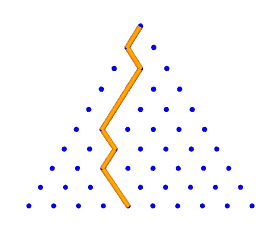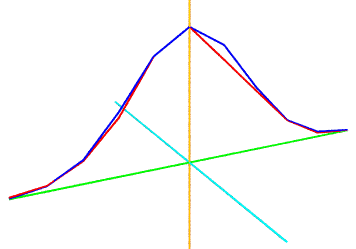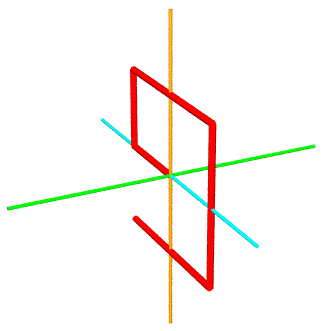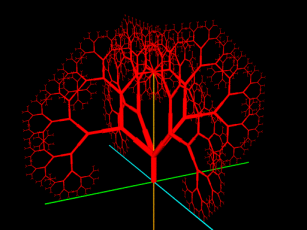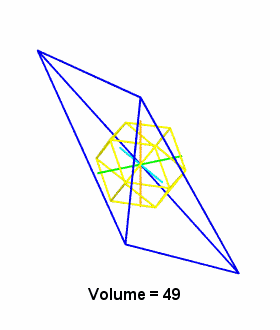|
Returning to our model of falling Pachinko balls, lets think of
left as 0 and right as 1. By casting a two-sided die object N
times, and adding all the 1's, we get the number of rightward moves
down a path of N falls.
We can tally our trials by incrementing a counter for each exit
pin by one, each time a ball reaches the last row. Each pin is
uniquely identified by the "number of rights" it takes to
reach it. In other words, the leftward and rightward moves taken by
each ball during its downward trajectory may come in any order, but
it's their relative number which uniquely determines the exit
pin.
>>> import rand
>>> odie = rand.Die() # two faces by default, 0 & 1 as possibilities
>>> trials = odie.cast(10) # cast the die 10 times, storing to trials
>>> trials # show list
[0, 0, 0, 0, 0, 0, 0, 0, 0, 1]
>>> trials.count(1) # count how many 1s (i.e. how many "rights")
1
>>> trials = odie.cast(10) # cast again, for another list of 10 outcomes
>>> trials # show list
[1, 1, 1, 1, 0, 1, 1, 1, 1, 1]
>>> trials.count(1) # count how many 1s (remember, it's random)
9
How many trials shall we run? The numerical entries in Pascal's
Triangle (or Tetrahedron) give a count of the number of pathways to
that pin (vertex, sphere). In a random system, the number of
encounters with a pin should be directly proportional to the number
of pathways leading to it. If "all roads lead to Rome", then many
travelers should encounter Rome, even if they wander aimlessly.
So let's add up all the entries in row N of Pascal's Triangle,
thinking "this is the total number of balls that exited through
this bottom row", and then compare bottom row entries with the exit
tallies generated by our random trials. Our random trials are
provided by the rand.binomial function.
>>> import rand
>>> import series
>>> rand.binomial(10) # 11 numbers because compared with Pascal's Triangle
[0, 12, 48, 124, 202, 245, 214, 130, 42, 5, 2]
>>> map(int,series.prow(10)) # rows start from 0, row 10 has 11 entries
[1, 10, 45, 120, 210, 252, 210, 120, 45, 10, 1]
>>> rand.binomial(12) # falling through to row 12 (of 13 spheres)
[2, 9, 63, 220, 510, 757, 946, 812, 479, 220, 65, 11, 2]
>>> map(int,series.prow(12)) # Pascal's Triangle entries close to same
[1, 12, 66, 220, 495, 792, 924, 792, 495, 220, 66, 12, 1]
|
